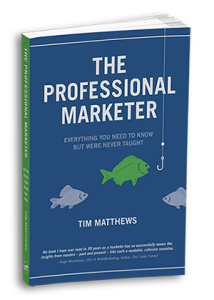Estimated Reading Time: 2 minutes
Humans are prone to distraction. In today’s world, smartphones are addictive little distractions that sit temptingly right in our pockets or purses. So, even if you are a good presenter and your topic is interesting, you should always check in with the audience, to keep them with you.
In their book Conversations That Win the Complex Sale, messaging gurus Erik Peterson and Tim Riesterer call the pattern of people’s attention “the hammock.” Why? Because, as shown below, it peaks at the beginning, when you have 70% of a listener’s attention, sags in the middle when you have only 20%, and, depressingly for the presenter, is highest at the end when you have 100%.
This assertion is not based solely on the authors’ experiences and observations. Research in neuroscience confirms that people pay attention to the beginning and the end, because they are using a part of their brain called the “reptile brain” that controls the fight-or-flight instinct. They pay attention at the beginning because they are deciding if the information can contribute to their survival. They pay attention at the end because they know they are about to be freed. Even if you lose them in the middle, the words “in conclusion” wake up the reptile brain. All the more reason to recap your key points at the end – you have the listener’s full attention.
To fight the hammock effect, you need to bring people back every 10 minutes. That is the time increment during which people pay attention, according to brain researcher John Medina in Brain Rules. (Some observers would argue that people’s attention spans are shrinking, so even 10 minutes is too long these days.) How do you bring your audience back? The standard method is to insert a “spike” at least every 10 minutes. The diagram above shows what the hammock looks like when you add in spikes, or “grabbers” as Peterson and Riesterer call them.
What counts as a spike? Here are a few you can use:
- Facts and Figures – Adults love facts and figures. They will often pause to take a note if a compelling fact is displayed on screen.
- Questions – Asking the audience a question can keep them with you. Whether you are looking for an exact answer or examples you can use in your talk, asking questions encourages your audience to participate and thus helps to keep them engaged.
- Show and tell – People like to see new things. Presenting or displaying a new product to see and experience can excite the audience. Steve Jobs was a master at this approach.
- Video – Video can be tricky. Though it will likely perk up your audience, a well-produced video can make the switch back to your presentation look bland by comparison. Ideally, the presentation should critique or comment on the content of the videos. Simply using the videos to display company advertisements or as a water break for the presenter will accomplish very little.
Next time you give a presentation, watch your audience carefully as you present a spike, and see if they don’t just look up from their phones.

 Want to learn even more about marketing?
Want to learn even more about marketing?